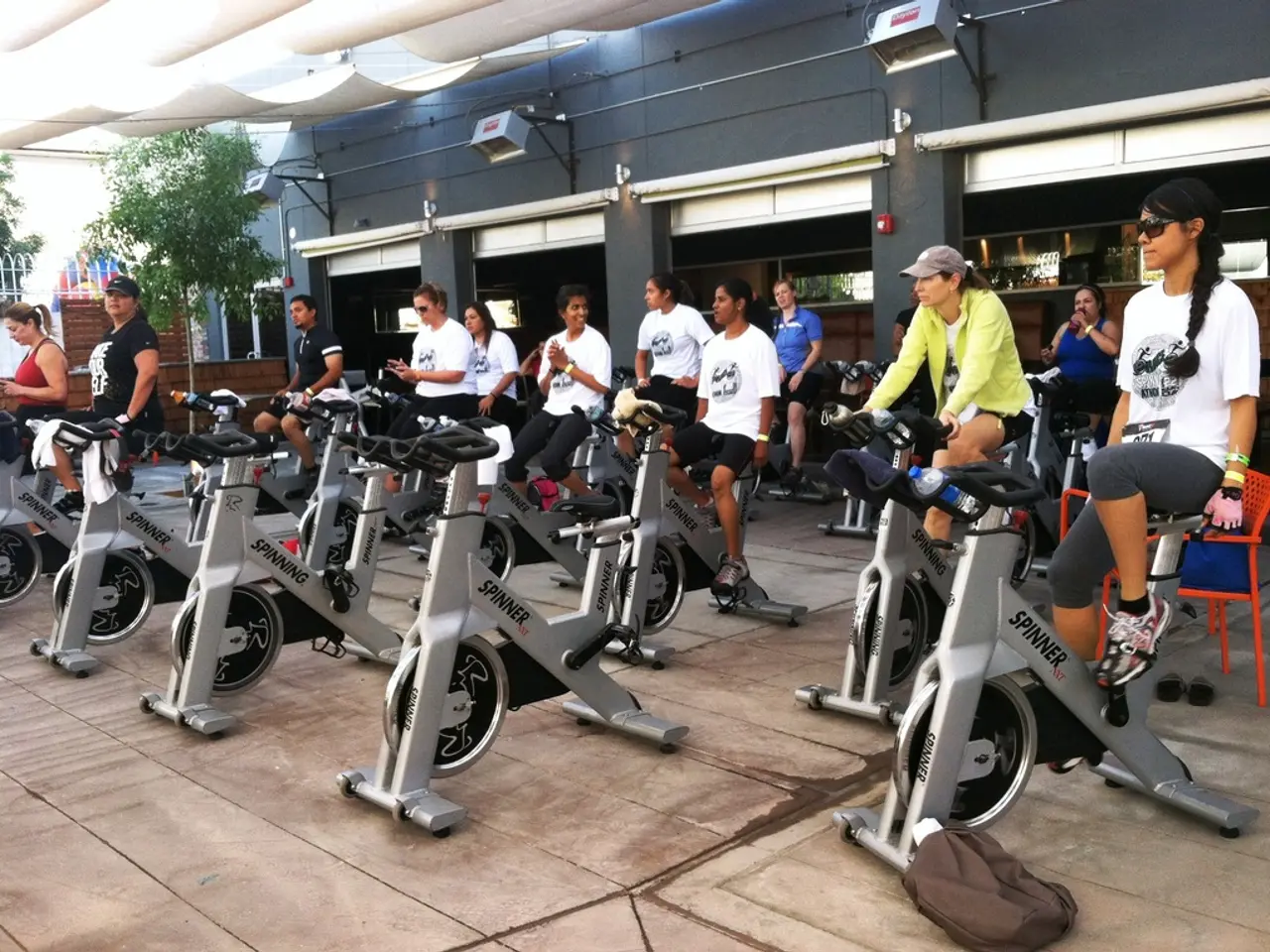Surviving Healthy Habits Amidst a Hectic Daily Routine
Staying fit and healthy can be a challenge when juggling a busy lifestyle. However, by focusing on short, high-impact workouts and intentional, convenient nutrition choices, it is possible to maintain a healthy lifestyle despite a hectic schedule.
Short, High-Impact Workouts
Short workouts of 20-30 minutes can be incredibly effective when it comes to fitness. By incorporating strength circuits that combine exercises targeting multiple muscle groups, such as thrusters, kettlebell swings, bodyweight squats, or plank holds, with minimal rest, you can maximize efficiency. Circuit or superset formats keep intensity high and reduce downtime. Using simple equipment like dumbbells or bands speeds up preparation. Even brief sessions done consistently several times a week improve muscle tone, metabolic rate, and overall fitness. Adjust your routine flexibly if needed by substituting with shorter home workouts or walking breaks.
Intentional, Convenient Nutrition Choices
Building meals balanced with protein, fiber, and healthy fats is key to supporting energy and satiety. Stock your kitchen with fresh, whole foods to make nutritious choices the easiest option available. Tracking meals for 4-6 weeks can help build awareness of portions and nutrient gaps, after which you can transition to intuitive eating. Simplifying meal prep is a game-changer for maintaining healthy eating habits amid a busy lifestyle. Opt for quick energy snacks like bananas, Greek yogurt, or a handful of nuts, which provide a good balance of carbs, proteins, and healthy fats.
Small Lifestyle Shifts
Focus on gradual habit changes rather than perfection. Creating routines, starting with manageable goals, and combining movement with enjoyable activities increase adherence and long-term success. Incorporating movement into daily life, such as taking stairs instead of elevators, walking or cycling to nearby destinations, using a standing desk, or playing an active game with family or friends, can contribute to overall fitness.
Additional Support
Engaging in group activities or online fitness challenges for encouragement can help keep you motivated. Having at-home workouts or short routines that can be done anywhere for flexibility is also recommended. Rewarding yourself for milestones, like buying new workout gear, can help reinforce positive behaviour.
Other Tips
- Incorporating movement into daily life, such as taking stairs instead of elevators, walking or cycling to nearby destinations, using a standing desk, or playing an active game with family or friends, can contribute to overall fitness.
- Experiment with different workouts, such as dance, martial arts, or outdoor activities.
- Identifying free time in a daily routine and allocating specific time slots for exercise using a planner or scheduling app is recommended.
- A bodyweight circuit, such as push-ups, squats, and planks in a sequence with no breaks in between, can be an effective workout.
- Exercising in the morning boosts energy levels and ensures fitness doesn't take a backseat as the day progresses.
- A 15-minute HIIT routine example includes 30 seconds of burpees followed by 30 seconds of rest, repeated several times.
- Combining tasks, such as taking phone calls while walking or doing bodyweight exercises during short breaks, can help maximize fitness time.
- Use apps or a fitness journal to record achievements.
- High-Intensity Interval Training (HIIT) and circuit training are time-efficient ways to achieve maximum results in minimal time.
- Practice journaling, yoga, or hobbies to reduce stress levels.
- Dedicate 5-10 minutes daily to meditation or deep breathing.
- No gym fitness is possible with bodyweight exercises, resistance bands, and outdoor activities like running or cycling.
- Clarity about one's fitness goals is essential for crafting a practical plan. Examples of goals might include walking 10,000 steps daily or dedicating 15 minutes to stretching.
By implementing these strategies, you can maintain a healthy lifestyle despite a busy schedule.
- Short, high-impact workouts, such as strength circuits combining exercises like thrusters, kettlebell swings, bodyweight squats, or plank holds, are effectively completed within 20-30 minutes.
- Incorporating exercises that target multiple muscle groups can help maximize the efficiency of short workouts.
- Circuit or superset formats keep intensity high and reduce downtime during workouts, making them more effective.
- Simple equipment like dumbbells or bands can be used for workouts, speeding up preparation.
- Consistently doing short workouts several times a week can improve muscle tone, metabolic rate, and overall fitness.
- A balanced diet with protein, fiber, and healthy fats is essential for supporting energy and satiety.
- Stocking the kitchen with fresh, whole foods can make nutritious choices the easiest option available when building meals.
- Tracking meals for 4-6 weeks can help build awareness of portions and nutrient gaps, eventually leading to intuitive eating.
- Gradual habit changes, such as routines, manageable goals, and combining movement with enjoyable activities, increase adherence and long-term success in maintaining a healthy lifestyle.
- Incorporating movement daily, like taking stairs, walking or cycling to nearby destinations, or using a standing desk, contributes to overall fitness.
- Group activities, online fitness challenges, or at-home workouts can provide encouragement and flexibility in maintaining a consistent workout routine.
- Recording achievements using apps or a fitness journal can help reinforce positive behavior.
- High-Intensity Interval Training (HIIT), circuit training, bodyweight exercises, resistance bands, and outdoor activities like running or cycling can provide no-gym fitness solutions.




